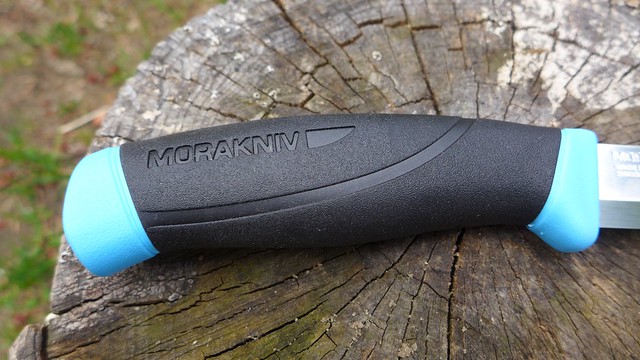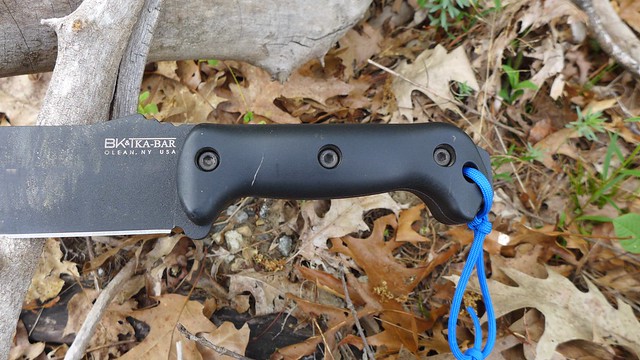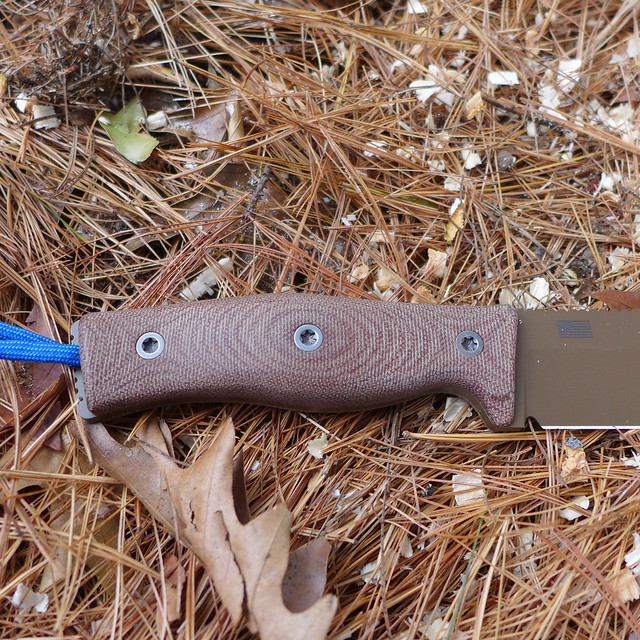The 5 Best Knife Handles in the Business
Tony Sculimbrene 08.22.17

Over the years, I have fallen deep down the rabbit hole of steels. CATRA tests, HRc numbers, and chemistry are fun. I love new steels, testing them, cutting with them, even sharpening them. But the longer I use knives, especially fixed blades, the more I realize that it is the handle not the steel, that makes a knife great. A knife with okay steel and great handles is a great knife, a knife with great steel and a crappy handle is eBay fodder. Handles make a knife and on a fixed blade where your workload is generally greater and more strenuous a bad handle can be a disaster.
But handles are tricky to design. Our hands are exceptionally complicated parts of our body and they are not easy to design around. Often times I hear or read people say things like “The handle is great! I feel so locked in.” This, it seems to me, is a huge mistake. Like mattresses and office chairs, the best handles are design with one fact in mind–during use people eventually tire of any constant position. For me, the best handles are the most neutral ones, ones that allow me to take hold in a variety of ways, and handles that don’t punish you during use.
Over the years, there are five handle designs that really stand out from the rest. Here they are in reverse order:
1. The Mora Handle (Mora Companion)
This is a perfect example of a good knife with a great handle and mediocre steel. Everything about the Mora is cheap–the sheath, the construction methods, the gimmicky non-slip rubber coating on the handle. But the handle itself is actually darn near perfect. First it does not have silly finger grooves or jimping, both of which are entirely unnecessary if the handle is well-designed in the first place. Second, instead of an abrupt change in shape via finger guard, the Companion handle gently flairs out, preventing from sliding up, but also not ramming you fingers into a wall during use. Third, the handle has a palm swell–a thicker middle than end–that helps you hold on to the knife. Finally, it has a small, but not useless parrot’s beak.
The only real negative relates to the rubberized coating. Not only is it not needed, making the knife too tacky sometimes, but over time it peels, chips, and tears. Moras aren’t made to be your forever knife and if you are okay with that, then ignore this complaint, but if you are looking to invest in a good quality tool, move on. The handle’s great, but you can find better handles on knives with better features elsewhere on the blade.
2. The Becker/Kabar Handle (Ka-Bar BK-9)
This is one of the best handles on the market. It is a handle with a knife built around it. The handle itself is a simple classic, almost symmetrical, with a guard in the front and a parrot’s beak in the back. Its made of molded plastic, but you can get factory and aftermarket versions that are shaped micarta. They feel a bit cheap, hollow really (because they are, in fact, hollow), but once you use the Becker handle you will love it. You can chop and cut with almost reckless abandon. The strong parrot’s beak lets you lean way back on the handle and really put a lot of force behind the edge. This is just great, and the knives it can be found on are inexpensive, but unlike the aforementioned Moras, they aren’t cheap.
3. The Bark River Bravo Handle (Bravo 1 LT)
We are getting into the high end now. Bark River makes some of the most consistently superior fixed blades on the market. They are designed for use, but still look splendid. The heart of their line up is the Bravo 1, a knife that has spawned a dozen variants and hundreds of imitators.
One secret behind its success is its very neutral handle. It, like all of the knives on this list, has a palm swell, but unlike the Becker handle, it lacks a distinct guard or beak. Its not terrible though because the shape simply lays across your palm, inviting you change positions as your work changes or your energy level fades. This is the perfect example of a very good neutral handle.
4. The Survive Knives Handle (GSO 4.7)
If the Bravo 1 handle is great because it is so neutral, the GSO is great because of its almost comical shape. The GSO handle doesn’t just have a palm swell, it has a very pronounced “Coke bottle” shape. When viewed from above looking down at the spine of the knife, the entire handle is shaped like a glass Coke bottle: narrow near the top, swelled in the middle, with a taper and then a wide portion at the end. The index notch, the place where your index finger rests has a very tight radius.
I have medium sized handles with medium sized fingers, so it fits me well. But if you have thick sausage fingers, the index notch may feel cramped. And that summarizes the whole handle well–if your handles are the right size all of these exaggerated features will work exceptionally well. If not, choose something more neutral, like the Bravo 1 handle.
5. The Andy Roy/Fiddleback Forge Handle (Bushcrafter)
The Goldilocks of the knife handle world–more curvaceous than the Bark River, but not as plus sized as the GSO handle, this is the best handle I have ever used. It is perfect balanced thanks to a tapered tang, resting on my index finger when it is placed in the index notch.
It has a modest Coke bottle shape. But more than all of these things, Andy Roy’s attention to detail is stunning. Every single shape and curve is purposeful and well-thought out. So far in my knife journey this is the Mount Everest of fixed blade handles. It is just amazing.
There are few others out there that I’d like to try. Busse’s Battle Mistress handle looks promise as does the handle on the Adventure Sworn Mountaineer, with its classic English Bushcraft handle, looks very enticing.





